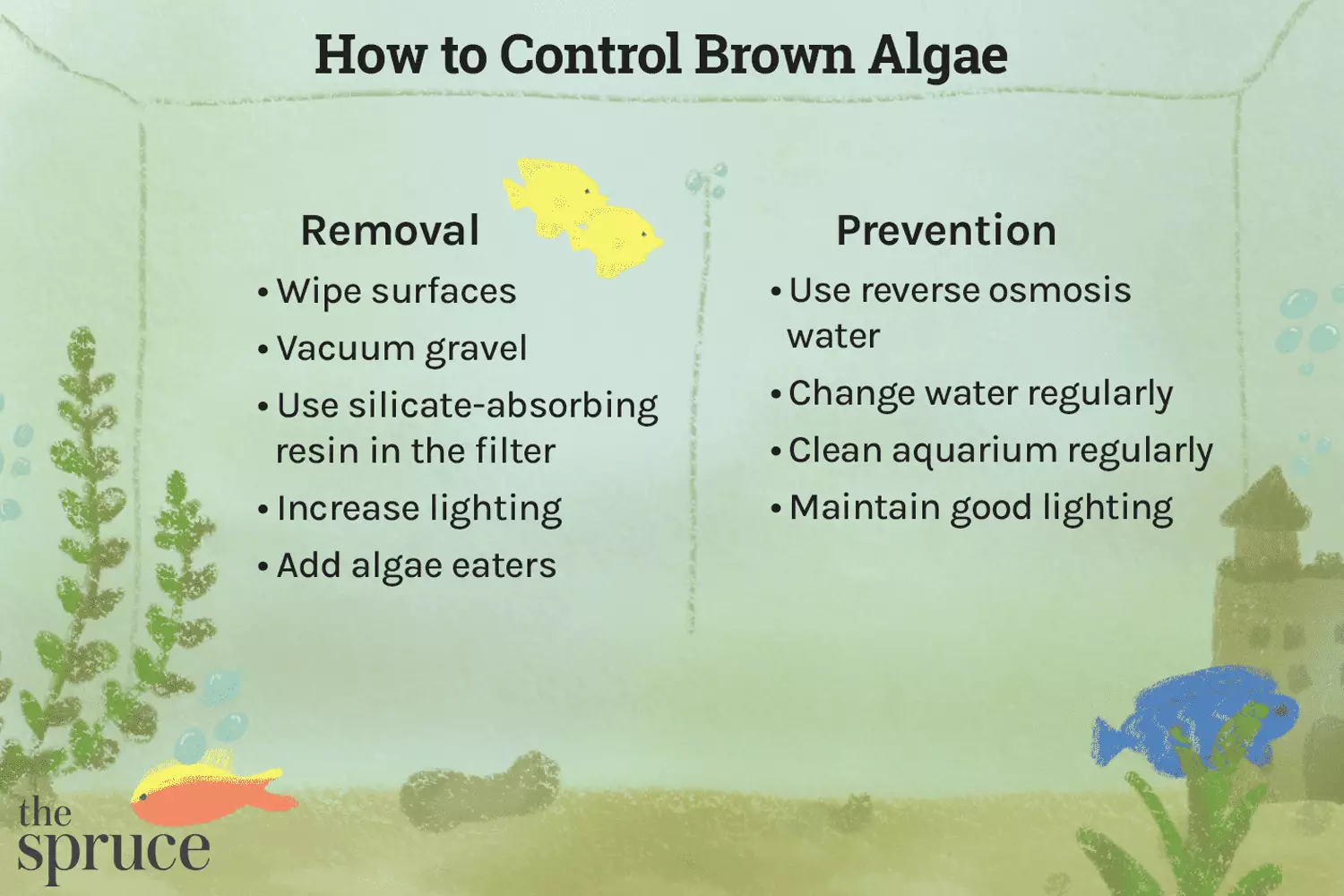Aquariums provide a unique ecosystem that can be both rewarding and challenging for hobbyists. One common issue many new aquarium owners face is the emergence of brown patches on the glass or gravel, known as Brown Algae or Silica Algae. This form of algae can rapidly cover the interior surfaces of an aquarium, posing concerns for both novice and experienced fish keepers alike. Understanding what brown algae is and how to manage it effectively is crucial for the health and aesthetics of your aquarium.
Brown algae, scientifically identified as diatoms from the class Bacillariophyceae, are unicellular organisms that can thrive in both freshwater and saltwater environments. They derive their name from the brownish tinge they present, which is especially noticeable under artificial aquarium lighting. Unlike the more harmful types of algae, brown algae are not inherently dangerous to fish, but their presence can signify issues within the tank’s environment.
Diatoms possess unique crystalline cell walls that reflect light beautifully under a microscope; however, this feature aids in their protection rather than making them aesthetically pleasing in an aquarium setting. These organisms tend to settle at the bottom of the tank, forming a thin film that can detract from the overall visual appeal of the aquarium.
The propagation of brown algae usually signals an imbalance in the aquarium’s water chemistry. Factors such as excessive silica, high nitrate levels, and nutrient surplus can contribute to an outbreak. Elevated silica levels often result from specific types of substrate like silica sand or from tap water high in silicic acid. Nitrates, on the other hand, can accumulate due to uneaten fish food, decaying matter, or overstocking, promoting conditions conducive to brown algae’s growth.
New aquariums are particularly susceptible to diatom outbreaks as the ecosystem is still in the process of balancing. Furthermore, tanks that receive limited light are more prone to brown algae blooms, as the competition from plants and green algae for nutrients is diminished due to inadequate lighting.
Prevention is the best strategy when it comes to managing brown algae. To maintain a clean and healthy aquarium, aquarium owners should regularly monitor and adjust water chemistry, employing a multi-faceted approach. Here are some useful tips for preventing the growth of brown algae:
1. **Optimize Lighting**: Ensure your aquarium receives a minimum of eight hours of light each day to foster the growth of beneficial plants and green algae that compete with brown algae for nutrients.
2. **Use Reverse Osmosis Water**: This should be considered if tap water is known to contain high levels of nitrates or silicates. Installing a reverse osmosis system can help purify the water and reduce the chances of algal infestations.
3. **Regular Water Changes**: Conducting frequent partial water changes can help remove excess nitrates and other nutrients, inhibiting brown algae growth.
4. **Cleanliness**: Keeping the aquarium clean is essential. Regularly wipe down surfaces where algae may collect and vacuum the substrate to remove detritus that could contribute to nutrient build-up.
If brown algae have already established itself in your aquarium, effective management is vital. Fortunately, diatom infestations can be easily tackled as they do not adhere strongly to surfaces. Simple wiping with a cloth or sponge can remove algae from tank walls and decorations. Vacuuming the gravel effectively removes any settled diatoms, ensuring they will not multiply rapidly.
In addition, specific fish species can help manage brown algae populations naturally. For freshwater aquariums, consider keeping a plecostomus or various otocinclus catfish, both of which are known to consume brown algae. In marine settings, many species of fish and invertebrates are also natural grazers of diatoms.
While brown algae can pose aesthetic issues in aquariums, they are a common occurrence, particularly in newly established tanks. By understanding the underlying causes, taking preventive measures, and employing appropriate management strategies, aquarium enthusiasts can maintain a thriving aquatic environment. Attention to detail regarding water chemistry, regular maintenance, and the introduction of algae-eating fish will ensure that your aquarium remains healthy and visually appealing, enhancing your enjoyment of this rewarding hobby.


Leave a Reply